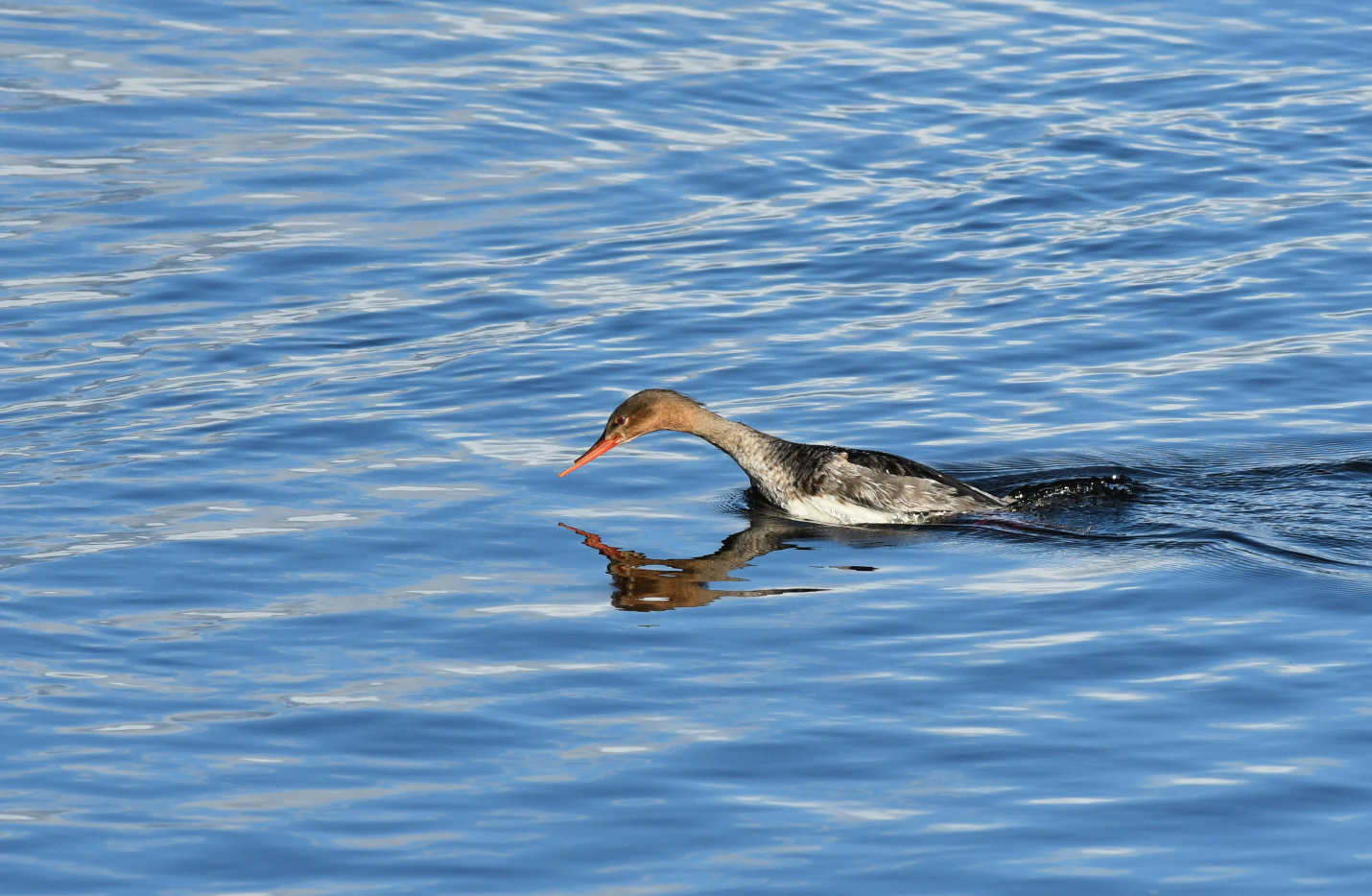I had a thought as I travelled up to the Basin on Wednesday, "it's a while since I'd seen a WTE" and then I saw this one, thankfully Lyall was paying attention when it flew over. Today I'm going to think of other rare species.......
I'd taken the Goldcrest photo on Tuesday and thought it worth posting for comparison.
"In the white-tailed eagle, body mass can typically range from 4 to 6.9 kg (8.8 to 15.2 lb) in females".
"The goldcrest is the smallest European bird, with a weight of 4.5–7.0 g (0.16–0.25 oz)".
That makes a WTE 1000 times heavier than a Goldcrest!
A case of little and large with our largest bird the White-tailed Eagle above at Montrose Basin and the Goldcrest below, the smallest UK bird
Goldcrest at Castlesea Gulley
The other WTE photos before it gained height and disappeared
Red-breasted Merganser "Broken Bill" the tip of its upper bill has been snapped off
The first Long-tailed Ducks I've seen this autumn, they flew in together at Lunan Bay on a day that was so dull I couldn't tell what was water and what was sky
Surf Scoter drake, probably about half a mile offshore
Velvet Scoter drake
This had me puzzling for a while as it seemed much too late in the season for a Willow Warbler. I couldn't with help make it into anything more interesting
Pied Wagtail juvenile at East Haven
The ponds at Murton are flooded and the water muddy, seen here and casting odd light on to this Gadwall drake
Jackdaws
Only the third ringed Starling I've found in my garden which is presumed to have been ringed in Montrose. I'll confirm with the ringer
The footbridge near Murton Farm at Murton Reserve suffered in the flooding and the circular path is currently closed to the public
The two main ponds are both full of the dirty water, it should settle soon, I hope
If all farms were doing this! A new map at Seahills just south of Auchmithie showing the areas where "wild bird cover" has been planted to help sustain the farmland birds over winter, brilliant!


























No comments:
Post a Comment